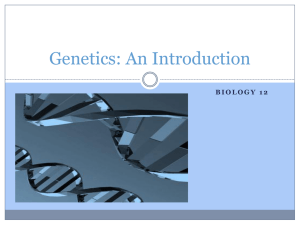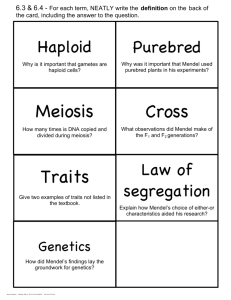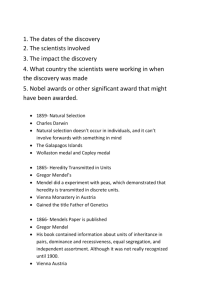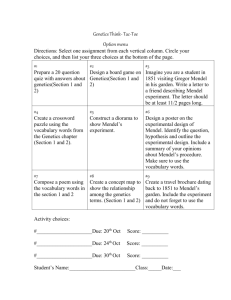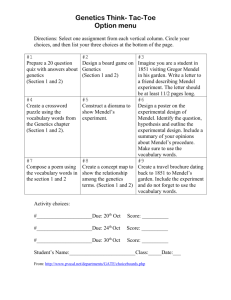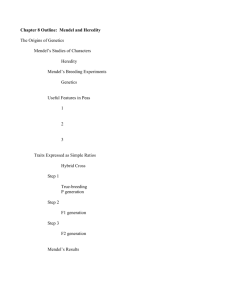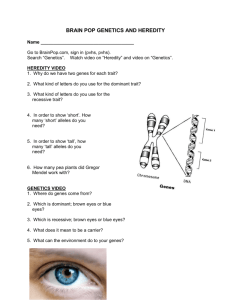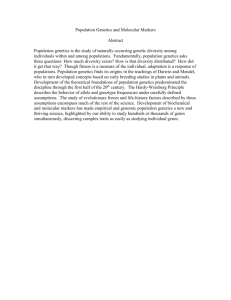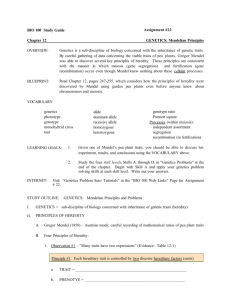Genetics Enters the Picture
advertisement
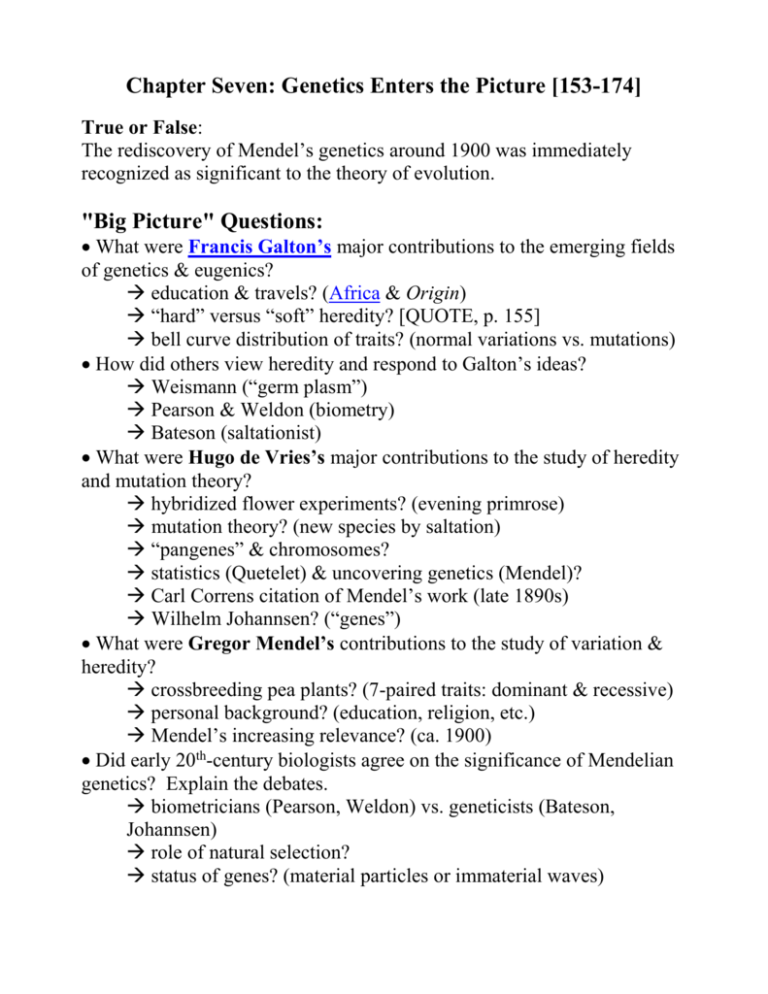
Chapter Seven: Genetics Enters the Picture [153-174] True or False: The rediscovery of Mendel’s genetics around 1900 was immediately recognized as significant to the theory of evolution. "Big Picture" Questions: What were Francis Galton’s major contributions to the emerging fields of genetics & eugenics? education & travels? (Africa & Origin) “hard” versus “soft” heredity? [QUOTE, p. 155] bell curve distribution of traits? (normal variations vs. mutations) How did others view heredity and respond to Galton’s ideas? Weismann (“germ plasm”) Pearson & Weldon (biometry) Bateson (saltationist) What were Hugo de Vries’s major contributions to the study of heredity and mutation theory? hybridized flower experiments? (evening primrose) mutation theory? (new species by saltation) “pangenes” & chromosomes? statistics (Quetelet) & uncovering genetics (Mendel)? Carl Correns citation of Mendel’s work (late 1890s) Wilhelm Johannsen? (“genes”) What were Gregor Mendel’s contributions to the study of variation & heredity? crossbreeding pea plants? (7-paired traits: dominant & recessive) personal background? (education, religion, etc.) Mendel’s increasing relevance? (ca. 1900) Did early 20th-century biologists agree on the significance of Mendelian genetics? Explain the debates. biometricians (Pearson, Weldon) vs. geneticists (Bateson, Johannsen) role of natural selection? status of genes? (material particles or immaterial waves) What were Thomas Hunt Morgan & his research team’s contributions to genetics & evolutionary theory? why fruit flies? (Drosophila melanogaster) Morgan’s method & approach? (QUOTE, p. 168) early views on Darwinism, Lamarckism, & mutation theory? views on Mendel’s laws? (genes & chromosomes relationship) “the fly room”? (linked traits, The Mechanism of Mendelian Inheritance [1915], ILLUSTRATION, p. 171) What were relationships among chromosomes, mutations, & genes? How did this change in the early 20th century? Franz Janssens (1909)? Morgan’s “beads on a string” metaphor? Muller (1927)? Why are the research results of T. H. Morgan’s team significant, particularly in understanding the modern synthesis of genetics and Darwinian evolutionary theory? Explain.
